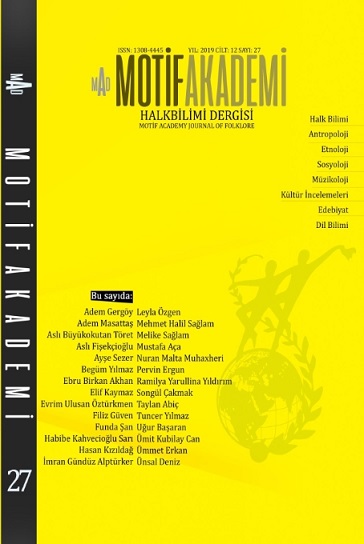RUSYA’DA MODERNLEŞME HAREKETLERİ, RUSYA MÜSLÜMANLARI VE İSMAİL GASPIRALI
MODERNIZATION MOVEMENTS IN RUSSIA, RUSSIAN MUSLIMS AND İSMAİL GASPIRALI
Author(s): Ümmet ErkanSubject(s): Civil Society, Governance, History of ideas, Political history, Social history, Modern Age, Politics and Identity
Published by: Motif Halk Oyunları Eğitim ve Öğretim Vakfı
Keywords: Muslims of Russia; Ismail Gaspıralı; Russian modernization; Cedarism; Turkestan;
Summary/Abstract: The Russian Tsarist, who completed his political unity in Ivan the Great, undertook modernization movements by turning his direction to the West during the period of Petro I. The Petro reforms are under the rule of Tsar II. Katerina continued to take control of the scattered Muslim tribes in the Russian Tsarist region. The Russian Tsar has exerted political, economic and cultural pressure on the Muslim population. The resistance against Russia, particularly Turkestan and the Caucasus, continued until the late 19th century. The inability of the Muslims of Russia to overcome the national and local commitments and the absence of a national consciousness prevented their unification. In addition, political instability in the region, poor management, poverty, the problems caused by being trapped between Russia and China weakened the resistance of Muslims in the region. The traditional forms of resistance to Russian occupations remained insufficient. Tatars, fighting against Russian expansionism, gained significant gains by mediating trade between Russia and Turkestan. The Tatar bourgeoisie, which showed improvement, made economic moves in the region, especially Kazan. With the fall of Turkestan to Russia, the Tatars, whose position is in danger, have sought remedies against Russian expansionism. The movement led by the first Tatar intellectuals such as Sehabeddin Mercani and Abdulkayyum Nasıri was put into a systematic form by İsmail Gaspıralı. İsmail Gaspıralı has supported the modernization efforts of Muslims in Russia and has been the pioneer of reforms, particularly education and culture. The aim of Gaspirali is to educate Russian Muslims according to the conditions of the times, to give them a national consciousness and to create a powerful Turkish bourgeoisie against Russian expansionism. For this purpose, he aimed to unite the whole Turkic world. The Turkish Union, which started as a cultural program, became a political target with the support of the Ottoman intellectuals. Gaspıralı developed long-term literacy learning time to 40 days with the phonetic method he developed and opened Cedit schools in Turkistan. Gaspıralı's motto “unity in language, idea and work together” has become a common slogan for Ottoman and Russian Turks.
Journal: Motif Akademi Halkbilimi Dergisi
- Issue Year: 12/2019
- Issue No: 27
- Page Range: 758-776
- Page Count: 19
- Language: Turkish

